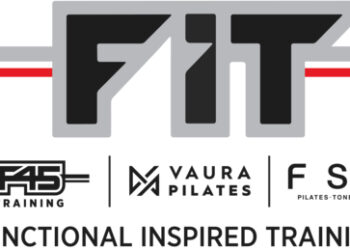Nobody likes the way they sound on the phone — including me. I know I’m pleasant in person, but I always wonder what people think of me if we first interact over the phone.
Then it got me thinking: do health clubs share my paranoia? It might not seem like a huge deal, but the best health clubs practice good phone etiquette. More often than not, a new member is gained or lost based on that first phone interaction.
To find answers, I went undercover to test various clubs across the country on their phone etiquette.
Meet James Smith, brand-new resident of [Insert Your Club’s Town]. He’s looking for a new health club to join, and would just like some basic information. After he’s talked with all the clubs in the area, he’ll talk it over with his girlfriend so they can make a decision together (I really got into my character’s backstory, but that’s not what this article is about).
I — oops, I mean James — called eight clubs who will not be named and opened with the same line: “I just moved to [insert city name], and I’m looking for a gym to join. I wanted to learn more about yours, so could you tell me how much a membership costs and what services are included?”
Before you ask, yes, all of the club representatives were very nice. As far as James can remember, there weren’t any alarming signs that pointed away from joining any of the gyms he talked to.
There were, however, some very common and effective responses:
“What’s your name?”
Clubs 2, 3, 4, and 8 opened with this question. This question always preceded their gathering of James’s personal information for marketing purposes. All but Club 1 asked for his information at some point in the conversation, but not all of them asked about it at the start of the conversation.
When you should ask for the potential client’s personal information so you can contact them is up to your preference, but it’s always important to ask for his or her name at the start of the conversation.
“Where are you from?”
Clubs 1, 2, 3, 5, and 8 all established a certain comfort level by asking this question. However, only Clubs 1 and 5 asked this question before they said anything else. Taking an immediate interest in a potential client before starting a sales pitch can go a long way.
“The membership is all-inclusive.”
Access to every club location, all classes, a free personal training session, the sauna, basketball court, and any other amenity imaginable were offered in whatever price of membership James could choose.
Needless to say, this made the memberships very appealing.
“The membership costs range from X to X.”
Additionally, the memberships all had different costs based on the clubs’ amenities and James’ commitment level. Club 1 offered memberships that cost $40 to $80, while Club 8 has memberships that start at $75.
No matter how much your memberships are, make sure that the cost is communicated effectively.
“We offer a million and a half classes!”
Alright, no one said that specifically. But every single club said some version of that exact sentence with a smaller number. James heard about offerings of 50 classes, 125 classes, and even 200 classes, ranging from Group X to aquatics to small group training.
It’s never bad to brag about your classes — just be sure to establish what the client’s interests are and tell them about any related classes you offer.
“We’d love for you to come check us out!”
Club 1 offered James a complimentary day pass, and Club 7 even asked him to commit to a specific day and time to personally tour the facility with the membership director.
“My name is…”
Surprisingly, only the first reps at Clubs 1, 2, and 7 actually gave James their names with no prompting. Introducing yourself is important — it establishes an immediate connection.
Nothing.
You might have noticed by now that there’s no mention of a Club 6. And that’s because they were closed because of snowy conditions in the area — or at least that’s what James could only assume.
The club’s answering machine actually gave no indication that the club was closed, but since James called the number three times and got no answer, he could connect the dots. He’s a smart guy.
It’s important to have a message at the ready in case you have to close your club due to inclement weather or other extenuating circumstances. Members should never have to guess whether or not your club might be open just because no one answered the phone and the answering machine message sounds the same.
Membership directors
It’s also worth noting that Clubs 5 and 7 had James transferred directly to a membership director, both of whom were extremely friendly and personable. At Club 7, the director was a former member who ended up working for the gym, so she was particularly excited to talk about her club.
Making that the protocol at your club can allow your most capable and passionate manager to speak directly to potential clients and encourage them to walk through your doors.
Implementing this practice, as well as learning from any of the previous examples, should help drive new membership at your club.
Stay ahead in the fitness industry with exclusive updates!
Bobby is the former assistant editor of Club Solutions Magazine.











I like when you call a gym up and the staff member answers: “hello?”
My personal favorite. My next question is: Is this club such and such?
Then two weeks later you call the same club, they pick up the phone: “hello?”
You’d think they would ‘get it